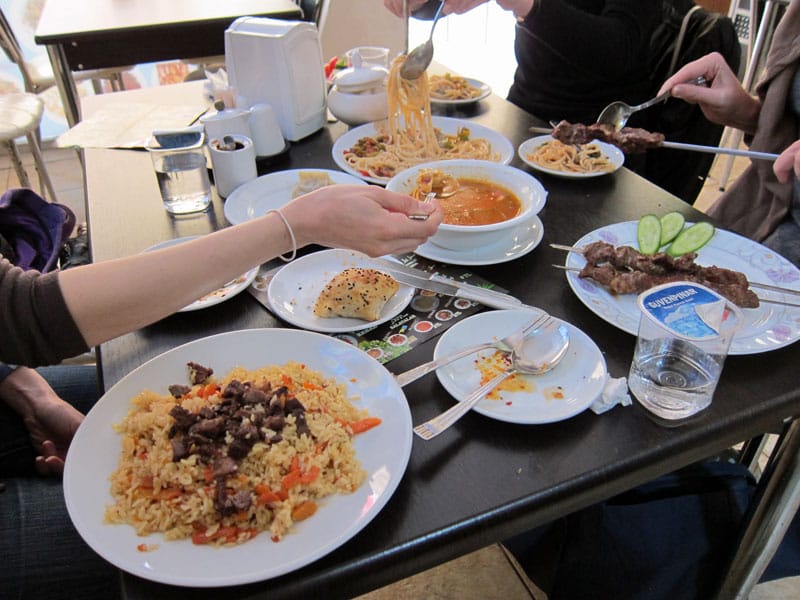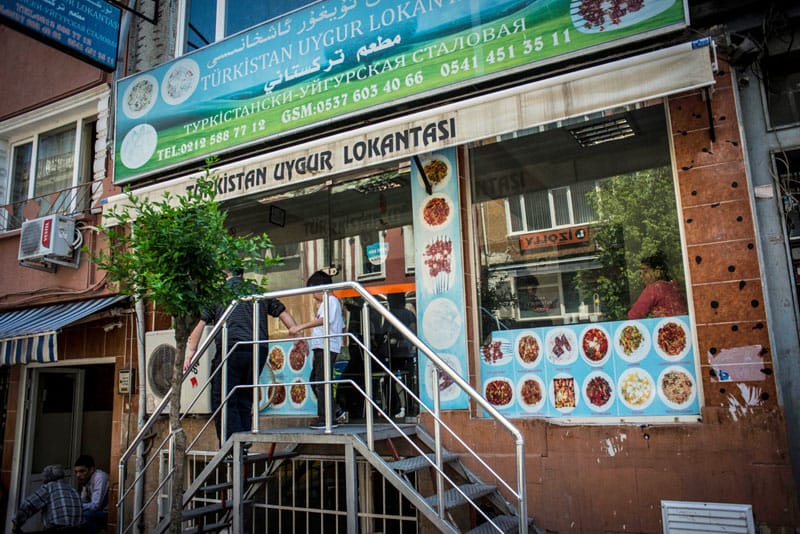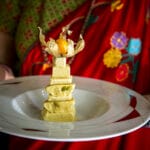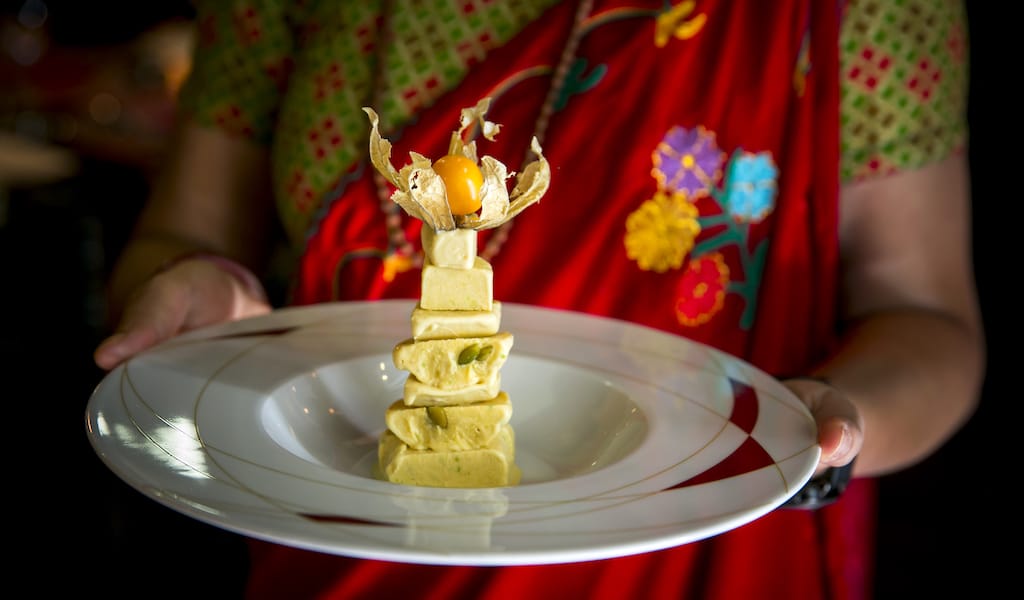Update: This spot is sadly no longer open.
Anyone who has spent time in the former Soviet republics of Central Asia (or, “the ’Stans”) will have developed a deep and lasting appreciation for the cuisine of the Uighur, a Turkic people spread across the region whose homeland, Uygurstan, lies across the border in western China. In Dushanbe, faced with the prospect of another oily pile of plov, Central Asian people and visiting foreigners alike gleefully opt for Uighur (romanizations vary) cuisine, whose hand-pulled, bouncy noodles, lagman, are ever-present from Shimkent to Khujand, yet still exotic.
We’ve chronicled the Uighur scene in Istanbul’s Zeytinburnu, where excellent lagman is to be found, but sometimes this neighborhood, in the city’s south, feels as distant as the Kashgar oasis itself.
Suffering from a serious lagman deficiency last summer, we took a casual meander around the backstreets near the Caucasus-bound bus station of Aksaray that turned into a moment of important discovery. The writing was right there on a leather-bound menu perched in the window: Lezzetli Uygur Yemekleri. We’d found Turkistan Uygur Lokantası and its simple yet enticing promise of “Delicious Uighur Food.”

The lunch-rush crowd here looked largely Uighur, and they were all greeted with a generous salam by the owner Ubeydullah, whose long beard brushed the keys of the cash register as he bowed slightly in greeting. Ubeydullah owns two other Uighur restaurants in Istanbul, making him the foremost Uighur restaurateur in town.
A shy, young Uighur waiter explained nearly every dish on the menu in the following terms: “It’s like the Turkish one [that it bears striking similarity to], but different.” Kazan kebab? Lamb skewers? Chicken sote? All quite different indeed, we’d found on previous visits, but not the dishes we’d cross town for. We didn’t need him to guide us toward the two-page spread of lagman varieties while we munched on somsa, a crunchy dough shell speckled with sesame seeds and stuffed with a steamy stew of lamb and onions.
From the lagman-related dishes we had suyak as, a lamb and dumpling soup composed of murky, meaty stock with thin dough squares, bits of lamb and shreds of spinach and chopped red bell peppers. Aci lagman kormasi is nearly the exact same ingredients stir-fried with soft half-inch cuts of lagman noodles, a spare, thickened sauce in place of the broth.
The lagman spesiyal is the connoisseur’s choice, in which a bowl of plain noodles is served beside a separate bowl of the topping, once again made of the previously encountered materials. The topping here is a pleasing counterpoint of tender slow-cooked meat and surprisingly lively, less-cooked vegetables sitting in a peppery gravy, but lagman is all about the noodles. Approaching the bowl of unadorned noodles, it’s hard not to see what the fuss is about.

We piled a few coils of beautifully irregular lagman on the topping. When held up with a fork they looked like a satellite photo of the Amu Derya river – all swells, narrows and bends. Spinning the lagman over the topping with a fork, Italian-style, produced the best results for us. The noodles came away fully sauced, wrapped around a nest of meat and peppers – a perfect bite. Heap or rake the topping over your noodles, or drag your noodles through the topping for just a slick of the spicy gravy – you can’t make a mistake with this dish. It is just as reliably satisfying here in Aksaray as diners surely recall it in Almaty or Karaganda. For people in this part of Aksaray who are not initiated in the ways of the Uighur kitchen, Vera Café, a Russian restaurant across the street, might be a tempting option, but let’s face it, everyone in this part of Aksaray knows better, even the Russians.
Editor’s Note: This article originally appeared on Istanbul Eats. You can read the original here.
 November 7, 2022 Casa Nepalesa
November 7, 2022 Casa Nepalesa
When Tanka Sapkota, originally from Nepal, arrived in Portugal 25 years ago, Lisbon was […] Posted in Lisbon June 18, 2018 Tokyo Kissaten
June 18, 2018 Tokyo Kissaten
Our eyes take a moment to adjust to the dim light upon walking into Ladrio. The room is […] Posted in Tokyo March 17, 2021 CB on the Road
March 17, 2021 CB on the Road
All morning, as we zoomed down south from Naples on a motorcycle, inky clouds threatened […] Posted in Naples
Published on June 13, 2014
Related stories
November 7, 2022
LisbonWhen Tanka Sapkota, originally from Nepal, arrived in Portugal 25 years ago, Lisbon was a very different city. There were no Nepalese restaurants and the only momo people knew of at that time was the King of Carnival (Rei Momo). Tanka says there were only four people from Nepal in the country, including him. “And…
June 18, 2018
TokyoOur eyes take a moment to adjust to the dim light upon walking into Ladrio. The room is like a vault, its brick walls and floor emitting a scent familiar to anyone who’s ever been in a cave or stone cellar. This mustiness is comforting, however, and the cool air a welcome reprieve from the…
March 17, 2021
NaplesAll morning, as we zoomed down south from Naples on a motorcycle, inky clouds threatened rain. So when we arrive at Rivabianca, a mozzarella di bufala cooperative in the village of Paestum, with our clothes still dry, we exhale deeply, not realizing that we had been holding our breath. Inside the dairy’s production center, separated…


















































































